Ancient Egypt has served as the context for a few movies that mix its story with science fiction or uchrony, showing pyramids turned into spaceships, mammoths used as pack animals, theriomorphic gods that are aliens, and the like. It is somewhat strange but fun as long as the approach is merely fantastic.
The problem is when it is intended to pass for real grosser things off the screen. And one of the most suitable for this is a series of hieroglyphs in the funerary temple of Seti I, in Abydos, which, at first glance, seem to represent vehicles of our time and even a flying saucer.
A helicopter, a tank or submarine, a plane or airship... even a flying saucer and a hovercraft just like the one in Star Wars! ! Did Seti I have a hidden fleet straight from the 20th century? Did he contact any civilization from outer space whose ambassadors showed up in a UFO to establish diplomatic relations?
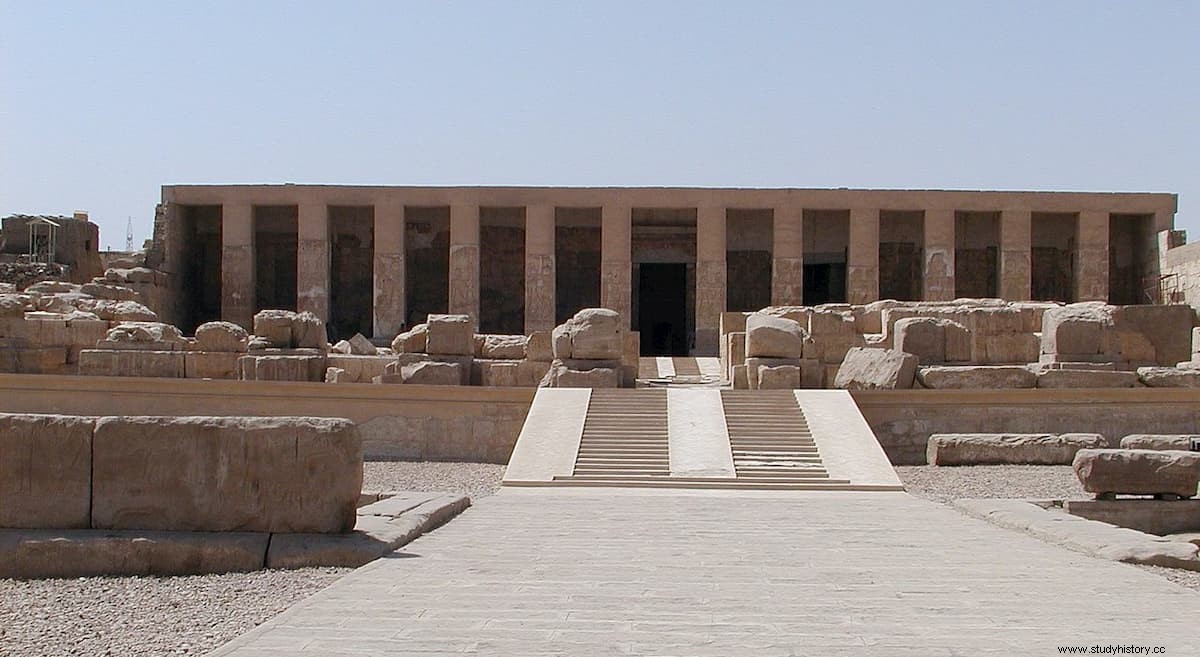
These types of questions and others raised totally seriously usually arise before the hieroglyphics of Abydos, where, it must be said in passing, some roguish tour guides exploit the subject well. The truth is that there is a simple and scientific explanation called pareidolia , a term derived from the Greek to define an erroneous sensory perception.
Indeed, pareidolia is a psychological phenomenon in which a vague stimulus, usually visual, causes the observer's brain to give it a recognizable and familiar shape. Lights, shadows, spots, outlines and the like make us see figures in clouds and mountains, faces on Mars, a rabbit on the Moon, faces in sockets, etc.
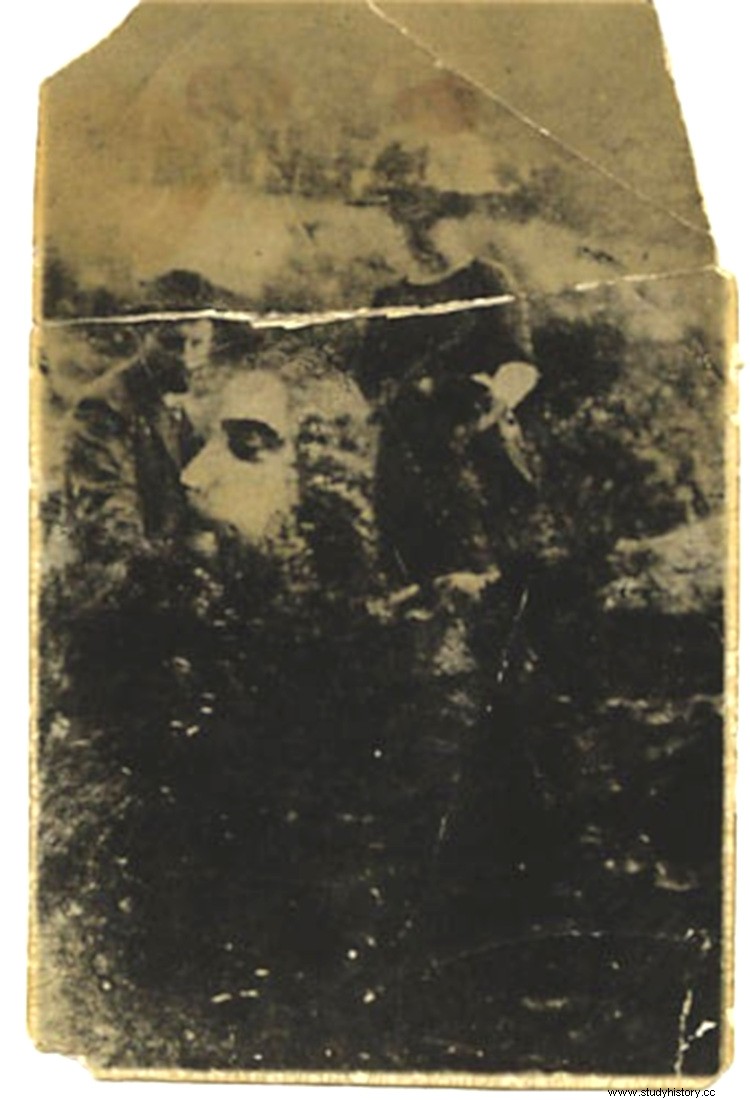
In the case of Abydos, a hieroglyphic set with silhouettes that closely resemble those of several contemporary means of transport, although the exact identification of some varies:the helicopter on the left is "unquestionable", while the two on the right that follow each other from top to bottom are interpreted as a submersible or a battle tank the first, by a plane or zeppelin the second; or a UFO, for some.
Once paleocontact has been ruled out (a pseudoscientific hypothesis that theorizes about the arrival of aliens on Earth during Prehistory or Antiquity, leaving a technological, religious and even biological legacy) for a mere matter of seriousness, there is nothing more to do than turn to the true experts. in Egyptian hieroglyphs, who are the Egyptologists. Some prefer to find five feet for the cat, but Egyptology explains the matter in a simple way.
It must be added that Egyptology... and image processing programs, since the photographs that usually show the case of Abydos are retouched quite often to eliminate the details that would spoil the matter. But with or without digital retouching, pareidolia is the consequence of other retouching, these manual, much earlier and that also contributed to sowing doubt without even imagining their authors.
Because the hieroglyphs we see today are the result of a palimpsest, that is, a rewriting (in this case in relief) of what was already written that, over time and erosion, merged both into a single and ambiguous image.
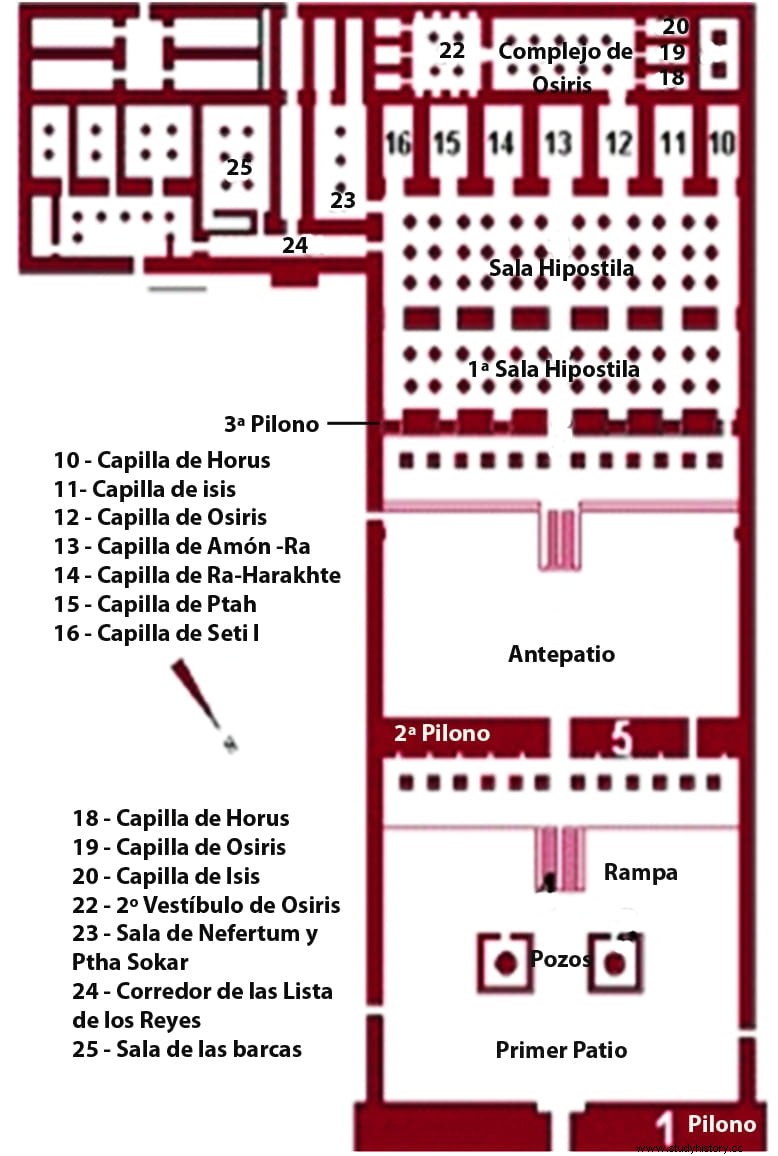
The custom of reusing documents to rewrite them became quite frequent in the Middle Ages, from the 7th century AD, due to the difficulties experienced in importing Egyptian papyrus and the scarcity -therefore expensive- of its alternative, papyrus. parchment. As paper had not yet reached Europe, they resorted to scraping the ink from old manuscript books - eight centuries were missing for Guttemberg to invent the printing press - and thus have blank sheets.
These volumes are called palimpsests but, by extension, the term can be applied to other formats such as architecture or sculpture.
In fact, it was almost a tradition in ancient Egypt that the pharaohs took advantage of temples, tombs, sarcophagi and even statues of predecessors, changing their names to put their own. Sometimes it was a sneaky, cheeky version of the damnatio memoriae , but others simply finished what was started by another, adapting it to the name of the one who finished it.
There are many examples, Ramses II being without a doubt the greatest artistic usurper that has ever existed. He was the son of Seti I and when his father passed away without completing the Memnonium (the mortuary temple, named after the pharaoh's coronation name, Men-Maât-Rê), his offspring and successor became took care of it.
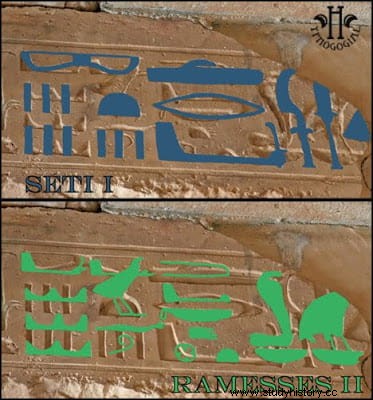
It is a complex structured on terraces to overcome the unevenness of the land, with an inverted L-shaped floor plan, to which Ramses II added two arcaded hypetral courtyards - the first with a garden - and a huge pylon of which hardly any remains remain. The temple, which was dedicated to seven gods (Ptah, Osiris, Amun-Ra, Isis, Horus, Ra-Harajty and the pharaoh himself), had as many doors and chapels, having been excavated and studied in the 20th century by Dorothy Eady, to whom we have already dedicated an article. The part of the complex that interests us here is the first hypostyle hall, where in 1987 the fall of a layer of plaster from an architrave surprised an American couple, revealing the hieroglyphs.
The tourists were named Ruth McKinley-Hover and her husband was her Harry, although the one who would achieve fame would be her. She was not an Egyptologist but a social worker and psychotherapist who, for God's sake, also had a great fondness for esotericism and UFOs.
In fact, her specialty was the group therapy treatment of people who claimed to have been abducted by aliens. This should be enough to put herself in profile and eliminate any hint of credibility, but in Abydos she found a vein that would exploit the rest of her life (she died in 2012).
The truth is that in those hieroglyphs there is no helicopter, nor any submarine, tank, plane or flying saucer - much less Luke Skywalker's hovercraft, unfortunately - that is why many Egyptologists tend to be offended when it is talked about, because of the lack of respect for their profession and the academic world in general.
Others, on the other hand, believe it is convenient to stop this type of thing before its dissemination grants them sudden popular recognition, and they agree to explain the how and why of what is in Abydos.
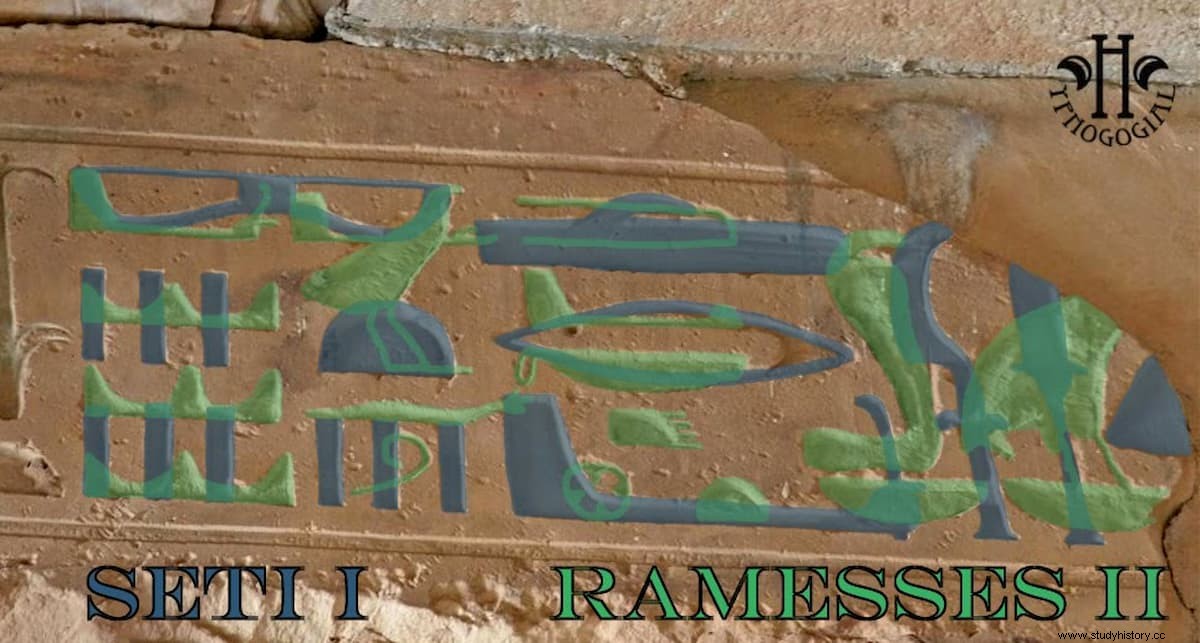
The first thing they say is what we said before:in ancient Egypt it was common to rewrite some hieroglyphs over others. In this specific case, the glyphs were carved again and the eroded parts of the stone were filled with plaster. Over time, some of that layer of plaster fell away, causing the original and new glyphs to overlap, forming unknown images; pareidolia would do the rest. This is something that abounds in many pharaonic monuments, only that in the temple of Seti I, chance wanted it to acquire forms that are as whimsical as they are familiar.
The pharaohs had five names or titles, each of which was represented by specific pictograms. One was the one of birth, which in the case of Seti was embodied in a duck and a sun inside its corresponding cartouche; another, that of the enthronement, a bee and a sedge (a type of plant); the third, that of Horus, of which the pharaoh was the personification on Earth and who was represented by a falcon; it was completed with a seated Golden Horus; and finally there was Nebty, the Two Ladies who symbolized Upper and Lower Egypt, whose representation was the couple formed by a vulture and a cobra. In front of the others, this one was placed freely, without a cartridge, just as it happened with the Golden Horus.
The controversial hieroglyph of Abydos is nothing more than the fifth name of Seti I with that of his son Ramses II superimposed. Experts say that the father's is delicately carved compared to the stem's, made less conscientiously, more carelessly, almost as if it were graffiti, perhaps because it had to be carved on the plaster that covered the previous one. In the name of him Nebty of him, Seti introduces himself as "He who rejects the nine [enemies of Egypt] » while Ramses, once the inscription has been retouched and plaster applied, does so as «He who protects Egypt and defeats foreign countries» . That's the plaster that fell off, leaving both parts visible.
The really funny thing about all this is that there is a fairly easy way to test the truth unless, like Ruth McKinley-Hover, something else is what you're looking for. Just look at the Nebty name of Seti I in another hieroglyph; there are many and it is not even necessary to go very far:in the temple of Amun, in Karnak -built by Ramses II, by the way- there is a very clear one that we see in this image below. We will have to deduce that good old Ruth didn't stop by. So let's end by paraphrasing the title of this article:Why is there a helicopter, a tank and a plane in an Egyptian hieroglyph? Answer:because there aren't.
